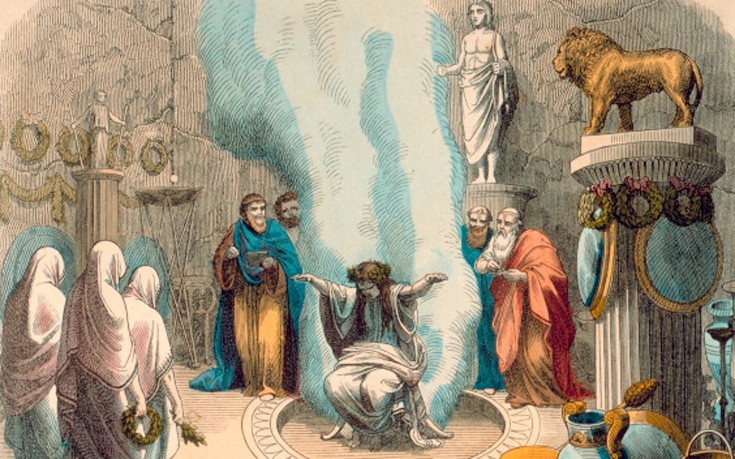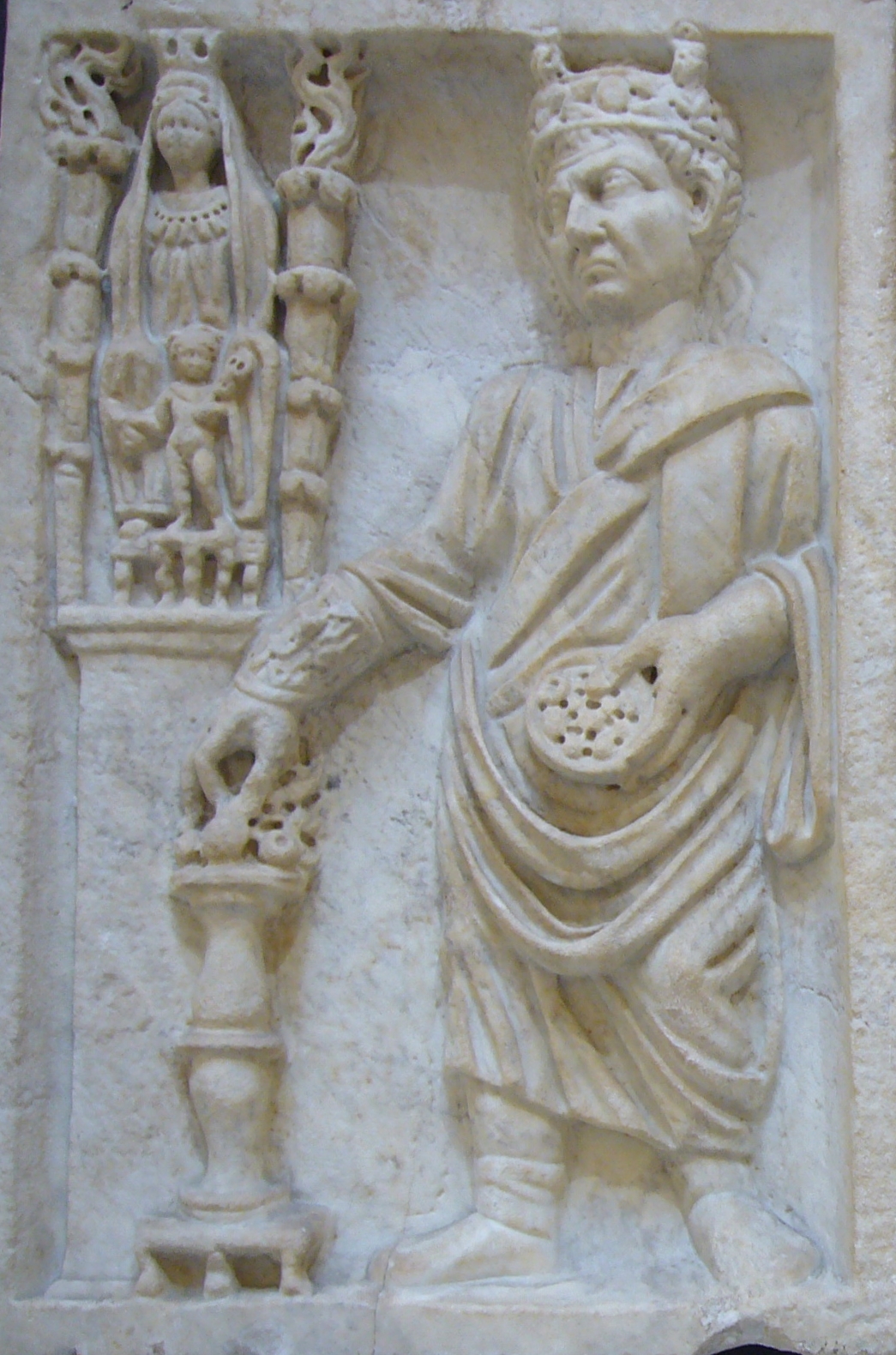“It is better to marry than to burn. It is better to marry than to be the occasion of death” Pope Gregory the Great had said in the 7th Century.

The first Great Schism in A.D. 1054. between the Roman Catholic Church and the Eastern Orthodox was due to a disagreement on priestly celibacy, and the RCC mandates of priestly celibacy have been widely protested by Orthodox Christians in the Eastern Mediterranean world for the last 1500 years.
The first ecumenical council condemned homosexuality, Lateran III of 1179, stated “Whoever shall be found to have committed that incontinence which is against nature” shall be punished, the severity of which depended upon whether the transgressor was a cleric or layperson (quoted in Boswell, 1980, 277).
Church Fathers, Origen, like his teacher St. Clement of Alexandria, had defended the lawfulness of marriage against celibacy in what they had feared were the teachings of demons was a departure from the historic faith as said by Saint Paul in “attaching themselves to demonic doctrines (Timothy 4:1-3).” St. John warns us against such deceiving spirits (John 4:1-6) and them πνεύμα τῆς πλάνης, “the spirit of error.”
Now the Spirit expressly states that in later times some will abandon the faith to follow deceitful spirits and the teachings of demons, influenced by the hypocrisy of liars, whose consciences are seared with a hot iron.…
Today, we may observe a result of these doctrines in the West with the Roman Catholic Church’s pedophile church scandals, unmarked children’s graves, and fewer people identifying with their religion. A 2021 Gallup poll found that Americans’ membership in houses of worship continued to decline in 2020, decreasing below 50% for the first time. In 2020, 47% of Americans said they belonged to a church, synagogue, or mosque, down from 50% in 2018 and 70% in 1999.
Many people and priests in the Western world praise celibacy as an exemplary demonstration of one’s faith in God only and the Church. But there are also many people, scientists, and even Church officials over the last 1500 years who have strongly disagreed with mandatory celibacy and in fact, many believed that it would cause great evils.
The quote I listed above, “It is better to marry than to burn. It is better to marry than to be the occasion of death,” was made by Pope Gregory the Great in the 7th Century shortly after under his authority Rome had issued a decree depriving Catholic Priests of their wives.
Meaning, priestly celibacy, was now officially enforced by Roman Law, which meant that it was illegal to have sex with anyone before. Many of these same said priests were married or had serious relationships, mainly with women.
It was said that sometime after this decree was ordered, Pope Gregory had commanded that some fish should be caught from the local fish ponds, but instead of finding fish, the fishermen reportedly found the heads of six thousand infants who had been drowned in the ponds in order to conceal the priest’s fornications and adulteries.
Upon learning of the horrors of the murders committed by his priests as a result of his Unholy new law, Pope Gregory recalled his decree, and purged the sin with worthy fruits of repentance, extolling the apostolic command:
“It is better to marry than to burn. It is better to marry than to be the occasion of death.”
It appears that Pope Gregory’s prediction was spot on because now 1300 years later, in America and many parts of the world, gay priests and child rape within Church walls have not only become an open secret, they have become a plague infecting our culture at all levels.
Meanwhile, the Roman Catholic Church is in crisis.
Priests all over the world are being arrested and convicted for pedophilia.
There is a shortage of men willing to join the RCC as Church attendance is at its lowest ever. For the last several years, Pope Francis has been hinting that they are considering allowing married men to be ordained to address the Catholic priest shortage.
Today, the Roman Catholic Church requires it for those who are called to be priests and bishops, while the Orthodox Church requires it, for pastoral reasons, only for bishops and priests can marry if they choose to.
However, there were many early Church Fathers, Popes, Christian Philosophers, and commentators who were adamantly against celibacy in the not-so-distant past!
In fact, they believed that it was unnatural, therefore, it was against God’s hierarchy and Natural Law and the end result would be Great Evil.
Since we are at another junction in this 6th Age when the Roman Catholic Church is again debating whether to allow their priests to marry and have children or to remain celibate as American Catholic Priests are openly coming out of the closet cage to the New York Times as homosexuals, I thought it would be enlightening to publish some quotes from history showing us exactly what many imminent Christain authors and philosophers had said about celibacy, effeminism, and homosexuality.
Especially since in our modern era of Sodom and Gomorrah on Steroids 2.0, there is massive disinformation and gay propaganda campaign in the media to falsely claim that the Bible does not speak against homosexuality and these so-called authors are conveniently not revealing what both history and science has already proven this causes.
Science has now found evidence to indicate that an effeminate boy or man is a product of our society forced into the pattern, in part, by the rigid sex-typing of personality required by our society.
For example, one of America’s most influential figures in American sexology, Alfred Kinsey had stated that sexual liberation, as opposed to sexual abstinence, was the key to both a strong marriage and a happy life. Kinsey strongly believed that abstinence was a sexual dysfunction:
“The only kinds of sexual dysfunction are abstinence, celibacy, and delayed marriage.
With that said, I wanted to show you what some of the most imminent and well respected Christain authors had said and written about the act of sodomy that we now call homosexuality.
HISTORY OF CELIBACY AND HOMOSEXUALITY
In Ancient Assyria (1450–1250 BCE), sodomy was punished with castration: “If a man has lain with his male friend and a charge is brought and proved against him, the same thing shall be done to him and he shall be made a eunuch.”
Under Augustus Caesar, to be accused of being effeminate was one of the worst insults that could be said to a man. Augusts had punished male effeminacy in his law treating adultery. To be an effeminate man is the dichotomy created between masculinity and femininity when a man generally chooses to engage outside the traditionally normal roles for males in sports and in their career choices
Under the Vendidad (c. 250–650), the Zoroastrian collection of laws, male homosexuality was understood as an effect of demons: “The man that lies with mankind as man lies with womankind, or as woman lies with mankind, is the man that is a Daeva [demon]; this one is the man that is a worshipper of the Daevas, that is a male paramour of the Daevas.”
PHILO OF ALEXANDRIA
Writing in the first century A.D., philosopher, Philo of Alexandria had equated Sodom’s sin with same-sex sexuality that he believed caused a man to be “unmasculine and effeminate,” a transgression of the gender hierarchy that he called the “greatest of all evils.”
Writing in the first century A.D., philosopher, Philo of Alexandria had equated Sodom’s sin with same-sex sexuality that he believed caused a man to be “unmasculine and effeminate,” a transgression of the gender hierarchy that he called the “greatest of all evils.”
SAINT CLEMENT
Clement of Alexandria’s treatment of marriage is a bond of man and woman based on a free and rational choice, whose greatness lies in the opportunity to bear children which assimilates man to God, the Creator. He believed that the primary purpose of marriage is to produce children by which, according to Plato, one secures for himself a kind of immortality.
uthorities in his treatise on marriage (Strom. II, 23, 137, 1 – III, 18, 110, 3). It shows that Clement widely quotes not only biblical authorities, but also classical authors; in his practical theology he puts great emphasis primarily on Paul the Apostle, Plato, and Aristotle.
St. Clement speaks of marriage as co-operation among the couple, and leads to a kind of harmony; Origen, his disciple, sees in marriage a mutual giving.
ORIGIN OF ALEXANDRIA
Origen defends Christian marriage, as a type of unity of the Church with Christ.
Since God has joined them together (a man and a woman in marriage), for this reason there is a gift for those joined together by God.
To support the institution of marriage as a union blessed and sanctified by God, Clement states an argument from
the gospel, namely the Jesus’ word: “For where two or three gather in my name, there
am I with them.”
Paul knowing this declares that equally with the purity of the holy celibacy is marriage according to the Word of God a gift, saying, “But I would that all men were like myself; howbeit, each man has his own gift from God, one after this manner, and another after that” (1 Cor. 7:7). Those who are joined together by God obey in thought and deed the command “Husbands, love your wives, as Christ also the Church” Eph 5:25.
Using Seneca’s argument from the conduct of animals, he says, “Some women serve lust without any restraint.” indeed I would not compare them to dumb beasts; for beasts, when they conceive, know not to indulge their mates further with their plenty. Intercourse must be suspended until the woman can conceive again.”
The First or Second Century Didache, also known as The Lord’s Teaching Through the Twelve Apostles to the Nations, an early Christian treatise written in Koine Greek, had said;
“You shall not commit murder, you shall not commit adultery, you shall not commit pederasty, you shall not commit fornication, you shall not steal, you shall not practice magic, you shall not practice witchcraft, you shall not murder a child by abortion nor kill one that has been born.” (Didache 2:2 A.D. 70).
. Cicero says, “There exist certain precepts, even laws, that prohibit a man from being effeminate in pain,”[12] and Seneca adds, “If I must suffer illness, it will be my wish to do nothing out of control, nothing effeminately.”
In early Rome, legislators and the Roman Elite had a problem with older males raping their children so they instituted what is called the Lex Scantinia. This law protected minor males of noble families (ingenui) from being raped by older males. It was said to have been enacted around 149 B.C.E.
Justin Martyr writing in 151 A.D. said;
“We have been taught that to expose newly-born children is the part of wicked men, and this we have been taught lest we should do anyone harm and lest we should sin against God, first, because we see that almost all so exposed (not only the girls but also the males) are brought up to prostitution.
And for this pollution, a multitude of females and hermaphrodites, and those who commit unmentionable iniquities, are found in every nation. And you receive the hire of these, and duty and taxes from them, whom you ought to exterminate from your realm. . . . And there are some who prostitute even their own children and wives, and some who are openly mutilated for the purpose of sodomy; and they refer these mysteries to the mother of the gods” (First Apology 27 A.D. 151).
At one of the first worldwide meetings of the Churches at the Council of Nicea, called by Emperor Constantine in A.D. 325 to address the problem of heresies, the Chruch voted against celibacy at the conclusion of the council.
The late Roman Empire finally promulgated the first European law openly prohibiting sodomy in 390. The law was part of a code of laws set forth by Emperor Theodosius (c. 345–395), who was under the influence of the Christian Church.
The church’s policy was defined by Augustine (354–430), who, following the apostle Paul, determined that sexual pleasure was permissible only as procreation within marriage. Because homosexuality, as with adultery, was a sin, its punishment was penance imposed by the church rather than by secular authority.
The Byzantine emperor Justinian (c. 482–565) outlawed homosexuality in 533 in the Justinian Code, persons who engaged in homosexual sex were to be executed, although those who were repentant could be spared.
In 693, the Visigoths in Spain, Egica, monarch of “Spain” pleads with the 16th Council of bishops at Toledo to deal more firmly with “that obscene crime committed by those (clergymen) who lie with males.” The Council sets punishment as removal from office, castration, ex-communication, 100 lashes, exile. Egica decrees similar punishments on non-clergy as a matter of civil law, increasing the harshness of prior law.
Saint Thomas Aquinas ( ? – d. 1274) theorizes that all human sexual activity was intended by God to be solely for the purpose of producing children. Therefore any other sort of sexual doing was sinful and “unnatural.”
Several saint-bishops, including Thomas Becket, were apparently advised by their doctors that they should abandon celibacy for the sake of their health – although they always refused to do so. Non-clerics were also at risk, especially if they went on prolonged military campaigns. Louis VII of France became ill after spending two months besieging a Burgundian town, and his doctors agreed that ‘prolonged abstinence from sexual intercourse had cause his indisposition.’ One account of the Third Crusade claimed that ‘A hundred thousand men died there/ Because from women they abstained.’
In the 19th century, there was a significant reduction in the legal penalties for sodomy. After the French Revolution in 1789, the Napoleonic code decriminalized sodomy, and with Napoleon’s conquests that Code spread.
Sodomy was omitted from the penal code, and again from the code adopted in France in 1810. The basic concepts of the 1810 code also became the basis for much of the law in Spanish South America.
The Napoleonic code decriminalized sodomy, and with Napoleon’s liberal conquests, Code spread, and so did sodomy and sexual perversions.

Moe is the founder of GnosticWarrior.com. He is a father, husband, author, martial arts black belt, and an expert in Gnosticism, the occult, and esotericism.








Whoa. You made this way too complicated.
Man has a dick. A woman has Vagina. Man puts dick in Vaginaa, outcomes boy and girl. Boy and Girl become Man and Woman. Priests & Monks have personal choices. Faggots are genetically mutated. A man with good genes from a good tree will not lust for buttholes. Those who lust for buttholes have coprophilia and coprophagia, this is a genetic mutation from deleted Y-chromosomes from neanderthal chromosome deletion that is caused by interspecies mingling. The human female egg contains antigens that delete the Y-chromosomes from male neanderthals. This entire article is moot.
I am Sion the Deliverer. Your content is not worthy.
Anyone with a slight degree of studies in human sexuality, history, and religion, could give you 100 instances where homosexuality was accepted, and 100 more where it was not, throughout history. You’ve chosen examples to fit a narrative, just as proponents of accepting homosexuality as a natural means of human sexuality would choose their examples. In the end, I’ll let God judge, whoever, and however God may be. Just because I was born into a religion, or chose a specific religion, doesn’t grant me sovereignty over anyone else. I choose to Love and let love, with no harm to self or other.